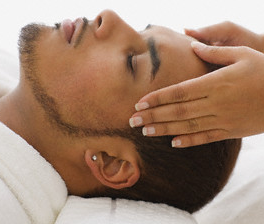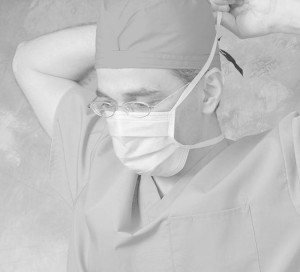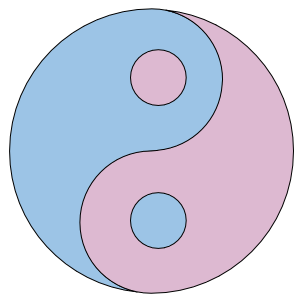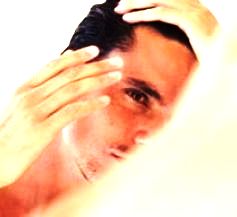Posts Tagged ‘hair transplant surgeon’
Thursday, March 21st, 2013
Follicular Unit Extraction and Scalp Micropigmentation
Most men will suffer hair loss to some degree in their life. This is because of DHT a male hormone that negatively affects the hair follicles of the scalp; most aggressively at the temples, crown and top of the head. So men bear this change or maturation of male pattern baldness (MPB) well; but many experience the well documented ‘psychological effects’ which culminate in low self image, esteem and confidence.
It is no wonder that hair restoration through hair transplant surgery is one of the leading medical cosmetic concerns among men. Today’s follicular unit transplant (FUT) surgery is providing the undetectable and natural solution that patients’ seek.
Nevertheless, some people with advanced hair loss and limited donor hair for the surgery have fewer choices. Follicular Unit Extraction (FUE) surgery combined with scalp micropigmentation (SMP) offers and innovative approach for men with advanced male pattern baldness (MPB).
A combination of these less invasive procedures can provide excellent results under the skills of today’s leading hair transplant surgeons. A combined FUE and SMP procedure means:
FUE procedure
- Individual follicular units (FUs) will be transplanted for balanced and even coverage
- Individual FUs will be transplanted to created an attractive age appropriate hairline
SMP procedure
- will include selection of dermal pigment to match your hair color
- micro injections of dermal pigment to simulate ‘stubble hair’
Medication
- to support the development of transplanted hair a short term prescription of Propecia may be prescribed
These two advanced hair restoration procedures can provide a patient with the option of having a shaved or ‘military type hair style that is attractive and a safe medical solution to their hair loss. s where the entire scalp and hairline frames the face with closely cropped ‘stubble’ hair. A person with limited donor hair can be a prime candidate for this safe and less invasive hair transplant procedure.
Skilled Hair Transplant Doctors
Skilled hair restoration surgeons can take individual follicular units (FUs) and create the maximum balanced coverage over the scalp. They can then create further ‘look of density’ by simulating hair stubble with scalp micro-pigmentation (SMP). Los Angeles hair transplant centers are innovative leaders in hair restoration procedures.
SMP is a procedure where special surgical needles are used to inject dermal pigments into the scalp or other areas such as eyebrows into the skin. The color of pigment selected is close to that of the patient’s hair resulting in a cosmetic hair shadow. SMP is a safe and very non invasive procedure.
Combining FUE and SMP to resolve the challenge of hair loss for people with little alternatives and represents an advancement in modern hair restoration. This solution is not for everyone but is a welcome choice for some people who previously had limited alternatives to resolve their hair loss problem.
Tags: fue, hair transplant, hair transplant surgeon, hair transplant surgery, men hair loss
Posted in Dr. Parsa Mohebi, Hair Transplant Procedure, Los Angeles Hair Transplant | No Comments »
Tuesday, September 8th, 2009

We understand people like to pamper themselves. A patient of ours wrote to us regarding a scalp and body massage. He had his hair transplant surgery in our Encino Surgical Office almost 8 months ago and asked, “Would get a head massage risk loosening the implants?” He also wanted to know if that would help increase circulation to the grafts and improve growth.
Hair that has been transplanted over 3 months ago and is growing normally is considered permanent and cannot be dislodged from your scalp. The main concern is in the first weeks of a hair transplant surgery when the hair is still settling in. Even so, some cases where the hair is removed the active part of the follicle may still remain and a new follicle will grow shortly after. At this point, hair cannot be harmed.
However, there is no proof that a scalp massage to increase scalp circulation is proven to increase the quality of existing or newly transplanted hair. More so, it has also not been proven that lack of blood circulation or oxygenation in scalp will cause hair loss.
Tags: after hair transplant, complications, Encino hair transplant, hair loss treatment, hair transplant surgeon, hair transplant surgery, hair transplatation, male patterned hairloss, men hair loss, scalp massage, scalp massage after hair transplant, us hair restoration
Posted in Uncategorized | No Comments »
Saturday, August 15th, 2009
 In our previous blogs we’ve touched on the subject of “best hair transplant doctor” and how to choose one. This is one of the most addressed topics so we see it fit to talk about it once more. Our best suggestion for any and all patients is to look into the quality of work and not the quantity that the work will be. There is more to this process and we’ll explain as we go. In our previous blogs we’ve touched on the subject of “best hair transplant doctor” and how to choose one. This is one of the most addressed topics so we see it fit to talk about it once more. Our best suggestion for any and all patients is to look into the quality of work and not the quantity that the work will be. There is more to this process and we’ll explain as we go.
Searching for a good hair restoration surgeon can be a tedious job. Large cities like Los Angeles and Orange County have a large network of cosmetic and hair transplant referrals. The hair restoration business is still considered very new and continues to evolve as new findings come to light. Because of this the level of surgical experience can vary greatly between all hair transplant surgeons vastly. Choosing a surgeon whether for cosmetic plastic surgery or hair restoration should not be based solely on experience but by the quality of their work. Statements like “best and most experienced hair transplant surgeon” don’t make the statement true but you have the right to see for yourself.
The best way to know if the surgeon is the best option for your hair transplant is by knowing more about the surgeon and by seeing or speaking with them personally. Most hair transplant clinics offer a free initial consultation and can be with the doctor themselves. By doing this you get to experience the doctor first hand. This way you can truly appreciate a good technique from a knowledgeable doctor when you see one.
One of the last suggestions is to do research on the practicing surgeon and the procedures available. Some locations, like ours, specialize in state-of-the-art exclusive follicular unit transplants (FUT), mega sessions for patients with extensive hair loss and follicular unit extraction (FUE) or minimally invasive hair restoration. This procedure is used to selectively extract hair grafts from the donor area with removing a strip as in traditional FUT procedure.
The hair transplant surgeon and medical director of US Hair Restoration sees a variety of patients with different hair transplant results from other facilities. Some of which can be noted very highly and others that would make you question the quality of work. All in all, the end result is that it would be unfair and hard to say who the best hair transplant surgeon in Southern California is. Today’s cosmetic market makes it easy for anyone to look their best. Modern hair restoration techniques are in high demand is most metropolitan areas and the demand keeps growing. All in all, we highly suggest that anyone considering hair restoration surgery to get educated about hair restoration first and meet with a hair transplant surgeon with a list of questions you want answered personally. Make sure this surgeon is someone you can trust.
Tags: best hair restoration, Best hair transplant, best hair transplant doctor, Best hair transplant doctors, best hair transplant in Los Angeles, best hair transplant surgeon, hair transplant surgeon, quality hair transplant
Posted in California hair transplant, Orange County hair transplant, Uncategorized | No Comments »
Sunday, July 12th, 2009
 In a recent email, a patient is going to undergo an additional hair transplant and scar revision. He had done some research in regards to the use of BOTOX injections to help reduce the width of his scar and wonders where and why would you use BOTOX injection, how many units or CCs, and whether it would benefit him. In a recent email, a patient is going to undergo an additional hair transplant and scar revision. He had done some research in regards to the use of BOTOX injections to help reduce the width of his scar and wonders where and why would you use BOTOX injection, how many units or CCs, and whether it would benefit him.
BOTOX injection has been recently introduced to hair transplant surgery for the prevention of scar stretching. There have been a number of patients that have been studied but the research has a very limited number of test subjects. The main purpose of the research was to help compare the effects of BOTOX injection on scar width. One side was treated with BOTOX injection while the other is left alone and the results are recorded during their post hair transplant surgery follow up visits.
It is hard to conclude what the best dosage of BOTOX would be in and around the donor wound because of the limited findings reported. In a recent blog titled Botox Can Reduce Widening of Hair Transplant Scars found in US Hair Restoration Blog, BOTOX helps minimize tension present around the edges of the wound. This action helps collagen mature and the scar wound to form completely.
More studies need to be done to get a much more conclusive answer in regards to the number of units needed and how often BOTOX needs to be reapplied. Because of this, the amount of BOTOX injection needed must be determined by the individual surgeon. This can also change based on the length and size of the hair transplant donor scar. As a note, the injections should not be placed within the first week of post surgery due to the acute inflammatory reaction caused by surgery and should be repeated in 4 month intervals. Muscles tend to get their strength back within or after that time frame.
Tags: Botox, collagen, donor scar, hair transplant, hair transplant surgeon, wound maturation
Posted in hair loss medication, hair loss products, hair transplant | No Comments »
Tuesday, May 19th, 2009
 “How can a male hairline be converted to a female pattern?” “How can a male hairline be converted to a female pattern?”
Although not always a very typical question or request, it is generally an issue most male to female transgender patients have to deal with. This is usually due to maturation of the hairline which may include recession of the frontal corners in mature male patterned hairline. This is what defines the frame of a male face as “masculine”. This can easily be restored through hair transplant surgery through follicular unit transplantation.
“I am already taking Propecia and Spironolactone to block my testosterone effect.”
Anti-testosterone medication can help minimize the effect of miniaturization or the balding of the hair connected with male patterned baldness but it does not stop the balding process completely. This is due to testosterone still being produced by the testicles. Post operative transgendered patients whom have had removal of their testicles as part of a transgender procedure can eliminate testosterone. This in turn can stop the process of male pattern hair loss in patients who are genetically prone to DHT (dihydrotestosterone).
Your hair transplant surgeon should have a good understanding of facial proportion and female hairline shaping in the process of transsexual hair transplantation. That is why transsexual hair transplantation should be treated meticulously and professionally. There are many different variants between a male and female hairline. This includes the location of the hairline from eyebrow level at mid frontal and laterals; temples need to be restored in a complete female shape; direction and orientation of hair shafts are also different between men and women. These little details and features must be meticulously cared for and that’s what can be expected through quality hair restoration for transgendered patients.
A hair transplant procedure is a good recommendation if you are looking into changing your hairline from a mature male hairline to a feminine one. This may also apply if you are suffering from male patterned baldness. We do recommend that you continue your regular medical treatment of anti-testosterone medication and a hair transplant to reshape the frame of your face. Maximum fullness and a perfect female pattern can generally be achieved through more than one procedure.
Tags: hair transplant surgeon, M-F Transgendered, trans gender, trans gender hair transplant surgeon, Trans women, transexual, transgender, transgender hair transplant, transse, transsexual, transsexual hair transplant
Posted in California hair transplant, hair loss medication, hair transplant, men hair restoration, Newport Beach hair transplant, Orange County hair transplant | No Comments »
Thursday, March 5th, 2009
Many hair restoration clinics can easily boast about their successful hair transplants but what about the ones that did not have optimal result? I received an email from a patient whom had a hair transplant at a different clinic. His hair never grew in the transplanted area even after having followed all the post op directions carefully. He also asks, Is there any other solutions to bring back my hair?
One of the biggest concerns for any patient who has hair restoration is the survival of transplanted hair. In some cases transplanted hair might never grow or experience suboptimal growth. These factors can be categorized into two major groups: 1) Technical Problems and 2) Patient Factor.
Hair Transplant Technical Problems
- Hair graft preparation and handling problems: Inexperienced technicians may actually manipulate hair grafts more than what the hair grafts can tolerate. This may lead to damage to the proliferated follicle cells during graft slivering, harvesting or implanting. In turn, the transplanted hair will not grow.
- Graft maintenance problems: From the moment the hair is removed from the body, hair follicles should be kept in a suitable physiological solution until the time they are placed in their new location. The solution must be kept between 4 degrees centigrade to slow the cell metabolism and prolong the longevity of the follicular cells.
- Complications during implantation phase: If sites are made too tight, technicians might manipulate the hair grafts physical attributes too much and affect the final potential of the hair cells growth.
Patient Factors
- In some rare occasions certain skin conditions can either restrict or stop transplanted hair from growing. The most common forms of skin conditions are alopecia areata (AA) and alopecia cicatricial (AC) as well as other medical conditions that may have already been present on or before the hair transplant procedure. This is why it is crucial to evaluate the hair and scalp by means of preoperative microscopic and macroscopic evaluation to rule out any condition that can affect transplanted hair growth. All hair transplant surgeons should raise these questions during their consultation especially if the patient has atypical hair loss or does not have any family history of similar hair loss conditions. If there is any doubt, it can easily be confirmed through scalp biopsy.
- After hair transplant care plays a very important role in the final results of any hair transplant procedure. Physical trauma to the newly transplanted hair may cause you to lose your newly transplanted hair. Other forms of hair trauma include pulling out or scratching newly transplanted hair or in psychological conditions like Trichotillomania in which they pull out their own hair.
It is best to review your results after one post surgery is completed by a good hair transplant surgeon. After reevaluation your hair transplant surgeon can tell you what may have caused your condition and maybe even treat the disorder that caused your less than desirable growth results.
We at our California hair restoration clinics perform several repair hair transplant surgery every month. Some of them are the result of old and some from recent but not perfect procedures.
Tags: hair restoration, hair transplant surgeon, unsuccessful hair transplat
Posted in men hair restoration, Uncategorized | No Comments »
Saturday, January 31st, 2009
 We answer to our patients and other patients who underwent or planning to undergo a hair transplant surgery in our hair restoration blog. Here is one of the question from a patient who has hair transplant around four months ago. Patient is anxious to see growth of his transplanted hair as soon as possible. He stated that he underwent a procedure four months ago and it has been hard to tell the growth of hair. We answer to our patients and other patients who underwent or planning to undergo a hair transplant surgery in our hair restoration blog. Here is one of the question from a patient who has hair transplant around four months ago. Patient is anxious to see growth of his transplanted hair as soon as possible. He stated that he underwent a procedure four months ago and it has been hard to tell the growth of hair.
He continues as follows, “In November at least over 2 months after the surgery I started using a buzzer on all unaffected areas of my head to balance out the length of the shave of the recipient area. I wasn’t totally bald before so eventually, my already existing hair in the front starting getting a little out of balance. I was pretty cautious about shaving the recipient area, so roughly around mid-December I started shaving it all to balance everything out. I also did it so I could monitor the improvement better, as it’s not easy when it’s uneven. It seems like I have more hair than I used to, but it’s still barely half the density of all the surrounding hair on the sides and around the top, not the front, which is approximately half as dense.
Can it be the side effect of the finasteride? But I barely remember the holes being poked in the recipient area when my hair transplant doctor performed the procedure. One thing that concerns me is that I was never told exactly how many grafts were transplanted. It never really worried me until now. When I had a previously replacement at X hair clinic, to be exact, they told me, but then I wasn’t under any strong sedatives so perhaps that’s why I’m concerned.”
Patient asked, “Does transplanted hair regrow at different rates? I know that some has grown in, but to me it’s not enough, as it’s very noticeable that it’s much less dense in the area I expected to get treated the most. Like it doesn’t seem too much improved when compared to before the procedure. To put it frankly, I’m already considering undergoing another transplant procedure, because my expectations were not met.
I must admit that my doctor was very nice, and answered all of my questions. However, I must say that I’m not impressed. This isn’t the first hair transplant procedure I’ve undergone. Actually, it’s the third. I don’t clearly remember the dates involved, like basically how long it took to see a difference, but for some reason I’m expecting to see more of a difference this most recent time around, because this hair restoration procedure involved the largest number of grafts. I’m just hoping that it takes longer for all the transplanted hair to actually kick in, and that it ramps up over time. Basically I’m hoping that seeing any difference doesn’t mean that that’s it.
If you have similar question after hair transplant surgery, don’t panic. The growth of transplanted hair could be very gradual and full result may not be seen before one full year after hair transparent. Of course you need to discuss your concerns with your hair transplant doctor. Transplanted hair generally sheds in 90% of people and you do not see anything for about 3 months after the hair transplant surgery. After the third month you may start seeing growth of most transplanted hair. That is more obvious for the patients who do not have any hair at all. People who already have some hair should not be able to see much before 6-8 months from the time of their surgery when transplanted hair is long and thick enough to be distinguished.
I understand that you are anxious to see the final result as soon as possible, but you cannot rush the growth of grafts. I do not perform nor recommend doing a second procedure before 6 months from the previous hair transplant because many of the grafts are not even out at that time. Be patient and you will see your transplanted hair growing in a few months.
Tags: after hair transplant, hair loss clinic, hair transplant, hair transplant doctor, hair transplant surgeon
Posted in men hair restoration | No Comments »
Sunday, January 18th, 2009
Bakersfield, California: US Hair Restoration hair transplant clinic soon will start its first clinic in the city of Bakersfield in California. US Hair Restoration already has three other locations at Encino, Beverly Hills and Orange County. Dr. Parsa Mohebi the medical director of US Hair Restoration stated that since we are getting many patients for hair transplant from the city of Bakersfield in our Encino and Beverly Hills hair transplant offices, we decided to make it easier for our hair transplant patients from Bakersfield to find access to our services in their town.
Hair Transplant Surgeon Restores Patients Hair and Self-Confidence was the title of Dr. Mohebi’s recently published article in the the magazine of Beverly Hills Courier. In the article Dr. Parsa Mohebi, hair transplant surgeon and medical director of US Hair Restoration discusses the modern hair transplant techniques and the innovation that a perfect hair restoration is made of with the most natural results possible.
US Hair Restoration announced the opening of its hair restoration clinic in the city of Bakersfield, CA to serve Southern California, particularly the northern cities of Los Angeles such as Sacramento and Fresno and north of the San Fernando Valley. US Hair Restoration hair transplant clinics are also accessible and being used by the residents of Las Vegas, Nevada and Phoenix, Arizona.
From Beverly Hills Courier magazine:
We all know that nothing looks better than a full head of hair, and one of the best people to provide it is Dr. Parsa Mohebi, medical director of US Hair Restoration.
Dr. Mohebi specializes in several hair-transplant procedures:
- Follicular Unit Transplant (FUT) is the gold standard of hair-transplant surgery, Mohebi said, giving very natural results. A strip of donor scalp is removed and the follicles are prepared under microscopes and distributed in the bald area in the natural direction and orientation.
- Follicular Unit Extraction (FUE), also called non-invasive hair-restoration surgery, uses special biopsy devices to extract individual follicular units without having to remove a strip of skin; so there is no linear scar.
Not everyone needs FUE or follicular unit extractions hair transplant Mohebi says. But people who want to shave their head in the future for any reason may consider FUE because there is no visible evidence of surgery on the back of their head. There’s nothing to suture, and the small dot wounds are not detectable a few days after surgery.
Since the newly placed follicles are so fragile, patients return the next day to get their hair washed professionally, given special shampoo and taught how to take care of their hair at home. After five days, no special care is needed, Dr.Mohebi said.
Ten days after the surgery, patients return to have the donor site checked and staples removed for those who had them. Hair starts growing after three months, and is long enough to style and comb after ten to twelve months. The third follow up is at 10 months after the procedure.Continuing to pioneer in the field, Dr. Mohebi is the inventor of the Laxometer, a device to measure the laxity or mobility of the scalp. Laxity of the scalp is key in determining the size of the donor strip so that enough can be removed for bigger cases, and the wound can be closed without too much tension and the scaring will be minimal.
US Hair Restoration has Southern California Clinics in Encino, California, Orange County, Beverly Hills and now Bakersfield. US Hair Restoration also offers hair transplant services in Dubai, United Arab Emirates (UAE). To help people stay abreast of all that’s happening in the field of hair restoration, and to answer questions ( heard from Europe and China) Dr. Mohebi maintains the US Hair Transplant Blog to answer your hair loss and hair transplant questions.
Tags: Bakersfield hair transplant, California hair transplant, Dr. Mohebi, hair restoration clinic, hair transplant clinic, hair transplant surgeon, Orange County hair transplant
Posted in Bakersfield hair transplant, men hair restoration, Newport Beach hair transplant, Orange County hair transplant | No Comments »
|
|





